Creating Real Wealth: How Slow Money Brought Kimball Brook Farm Back from the Brink
by Ginny Sassaman
A dramatically different investment idea—called Slow Money—flies in the face of cultural pressure to constantly make ever greater amounts of money. Computerized global trading has so widened and sped up trading, that the financial world has come unfastened from the real world and real commodities. Trading in world markets has increased by 1,000-fold the past 50 years, but the world's resources cannot expand at anywhere near that rate.
The speculator's game forces money to move faster, without regard for damage to the natural world and its people. It's a game most are losing. But if the extractive practices of 20th century capitalism are no longer sustainable in the 21st century, what can replace them? For a growing group of investors, a healthy food system seems the real bottom line.
Continue Reading... |
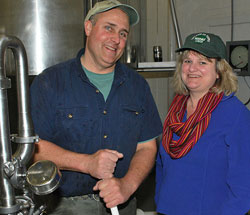
J.D. and Cheryl DeVos pitch in along with their workers at The Kimball Brook Farm Creamery in Hinesburg. Photo: Jan Doerler |
|
Vermont Woman Special Series:
Green Mountain Care Board Profiles
Anya Rader Wallack and Healthcare Reform: Guiding One Big Elephant
by Roberta Nubile
Vermont healthcare reform reminds me of the fable of the elephant and the blind men; comprehending the whole is tough. To do so, we need time to educate ourselves; attend or view the many public meetings; read hundreds of newspaper articles, blogs and reader responses; and pore over the state of Vermont's websites. Most of us cannot do that. We learn what we can through bits and pieces we pick up from passing conversations with friends who have encountered the elephant, or read snapshots in the news.
Continue Reading...
Wallack to Step Down - Her Own Words
"In late March, 2013, I announced with great sadness that I will be stepping down as Chair of the Green Mountain Care Board in September.
Continue Reading... |
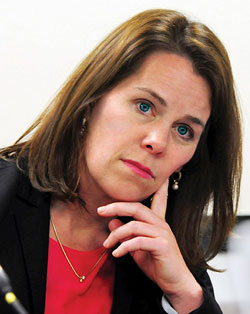
Green Mountain Care Board Chair Anya Rader Wallack, Ph.D. has laid a strong foundation for the nation's first single-payer healthcare system. Photo: Jan Doerler |
|
Winning an Education Against the Odds
by Cindy Hill
Lack of childcare. No money for books. Family pressure to stay home or go to work instead of "wasting time" in college classes. Lack of examples to follow when no one else in the family has gone to college. A struggle with English as a second language. Physical disabilities that make getting to class virtually impossible. Bad experiences in primary and secondary education. Self doubt.
The reasons to drop out of college are endless. Yet the majority of women entering Vermont's colleges succeed—some against incredible odds.
Why do some women make it to graduation when so many, about a third of those who start, do not? Vermont Woman asked some of Community College of Vermont's (CCV) most remarkable female students how it is they made their successes happen.
Continue Reading... |
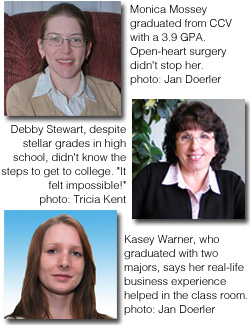 |
|
An Arm and a Leg: The Cost of Vermont Health Care
by Katharine Hikel, M.D.
Vermont is the healthiest state in the union. For six years running, it has been ranked so by United Health Foundation, which analyzes data in 24 categories. Yet despite this track record, Vermonters paid an average of $7,500 per person for health care and insurance, with the state's total healthcare expenses projected to hit $10 billion by 2020.
There is no relief in sight. Vermont's largest hospital, Fletcher Allen Health Care (FAHC), both a "primary" care center for Chittenden County and a "tertiary" care center for the region, is loaded with specialists and medical technology, and serves as a referral center--the tertiary level--for severe cases. It is the major driver of costs in the state.
Continue Reading... |
 |
|
Scientists Preserve a Key Four-State Waterway
by Allison Teague
The Connecticut River valley has been in use by humans for at least 11,000 years, as evidenced by the rock petroglyphs on its Vermont shoreline in Bellows Falls. It provided verdant land and good hunting grounds for early indigenous peoples. Indian corn fields flourished on both sides of the river in the rich floodplains along its entire length. The river, whose Mohican name, quinnitukqut, means "long tidal river," was the principle north-south travel route before roads and trains.
Today, with 22 dams along its 410-mile length, models that describe the flow pattern of the Connecticut River are being completed for the first time ever. The whole system is being studied and mapped, with five of the river's hydroelectric dams up for relicensing by the Federal Energy Regulatory Commission (FERC). Three of these dams are in Vermont and New Hampshire, and two in Massachusetts.
Continue Reading... |
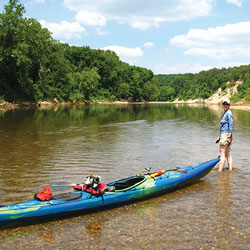
Water enthusiast and river scientist Kate Kennedy says her favorite place is on the water.
She is part of the multi-state team assessing the Connecticut River watershed. |
|
The Truth Behind the Death Race
by Lauren Walker
"I think I'll go for a run in the woods," Jane Coffey said one fateful autumn evening in 2010. I happened to be there, her neighbor at the time. Our two dogs were romping around, and Coffey's husband, Seth, and her three-year-old daughter, Aida, were playing in the grass.
Jane had never been a runner; she was just throwing it out there, almost to the wind, as an idea. Jane had been sorely tested in her life, and she was still searching, on some level, for a way to understand and heal from grief.
Maybe a good run in the woods?
Continue Reading... |
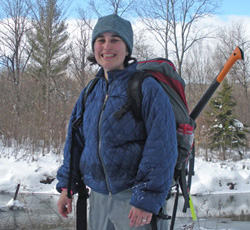
It took months for Jane Coffey to begin to recover. She slowly picked up the pieces. And finally, after a lifetime of athleticism, she returned to her body, which had so cruelly betrayed her. |
|
|